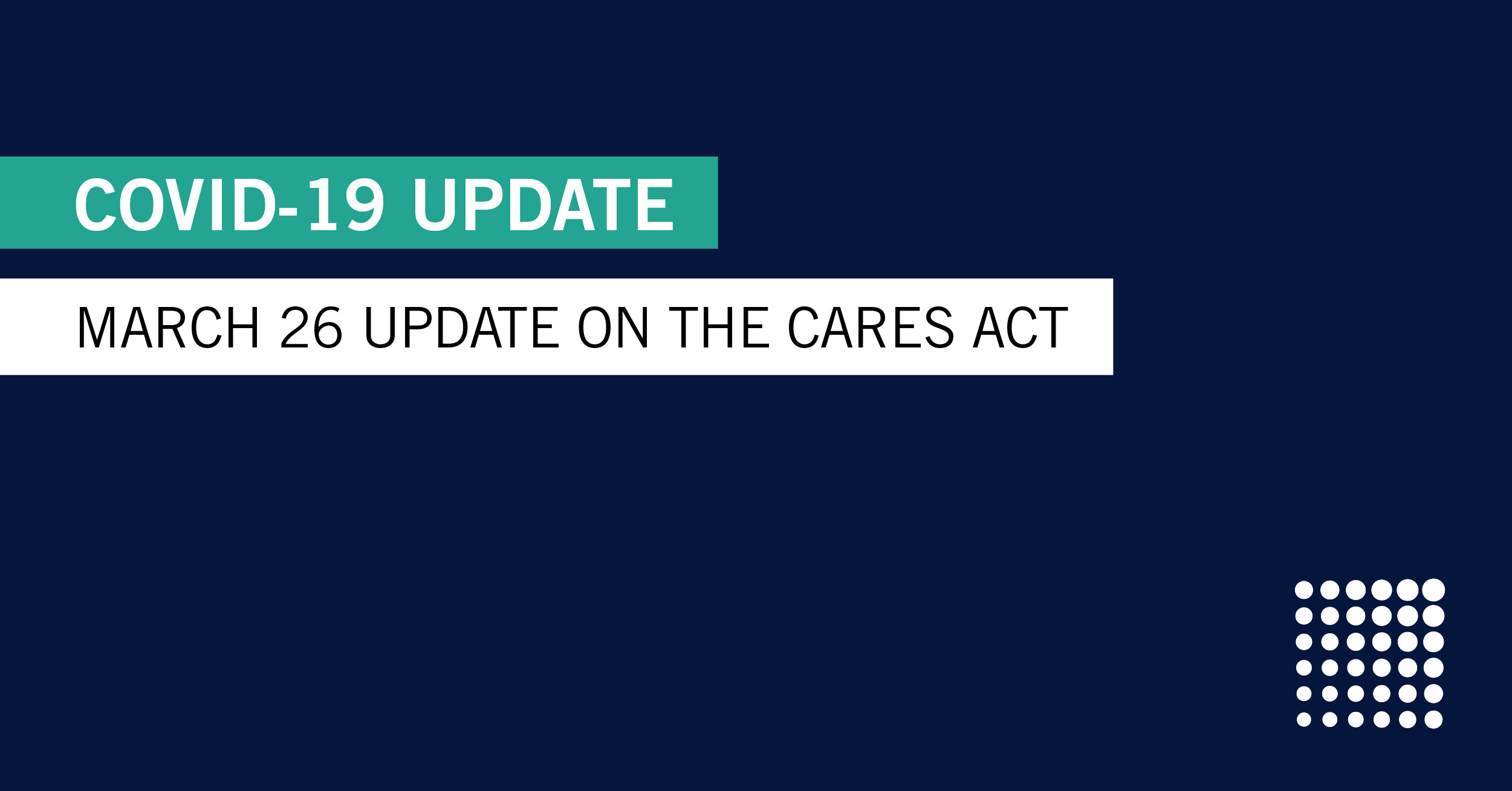3 Critical Pieces to Know About the Bill Now
UPDATE March 27, 2020: The bill has passed and is now law.
The Senate voted unanimously to move forward with an estimated $2 trillion stimulus package in order to help individuals and businesses. This act is yet to be approved by the House.
Please note: This bill has not been voted into law. CWA will continue to provide you with various strategies and recommendations on exactly what to do, as we have in previous communications.
We believe that the most critical piece of this bill will be the timing of when to apply for and use the various financial tools this new package makes available. Our plan is to work through the legislation, develop a plan and record a webinar. However, since there is a tremendous amount of information being thrown at you, we want to start off with a high level synopsis of the most critical pieces for your staff, your business and you.
A summary of the items that we feel are important to you are as follows:
1. Expanded unemployment insurance (UI)
This includes a $600 per week increase in benefits for up to four months and federal funding of UI benefits provided to those not usually eligible for UI, such as the self-employed, independent contractors, and those with limited work history. This benefit will be on top of the regularly qualified state UI your staff is already receiving or will be receiving. The benefits will be payable in arrears to staff already laid off. The additional payments can last through July 31, 2020. This is an enormous benefit for your furloughed or laid-off employees. This allows you to proceed with the next section (Small Business Administration loan) in a reasonable and prudent manner.
CWA Comments & Strategy
This benefit is in direct agreement with CWA and our vendor CEDR HR Solutions recommendation that closed practices proceed with a lay-off or furlough when revenue is no longer being produced. The theory behind this part of the bill is a benefit for the millions of businesses that have been closed and laid off employees far prior to dental practices needing to do the same thing. The House wanted to get minimum wage at $600 a week, which correlates to $15 dollars an hour on a 40-hour week. For a typical CWA practice staff member that makes $25 dollars an hour, they should now receive approximately $400 in state unemployment, plus the additional $600 on a weekly basis. This is nearly the equivalent of 100% of their salary.
This now allows your staff to have a tremendous benefit while the office is closed, and you have no revenue. Since it will last until July 31, 2020, it allows you to re-build your practice in the most efficient manner possible by bringing staff back at the appropriate time when you are ready to re-open and begin to produce. We believe this is critical since we don’t know how quickly patients will want to get rescheduled.
2. $350 billion allocated for the Paycheck Protection Program (PPP)
These loans will be provided by the Small Business Administration (SBA) and are meant to help small businesses (fewer than 500 employees) impacted by the pandemic and economic downturn make payroll and certain other expenses. The covered period for receiving a loan is February 15 to June 30, 2020. The maximum loan amount will be 2.5 times the trailing 12-month average of your payroll and payroll related expenses, including health and retirement benefits limited to compensation of employees (including the doctors) up to a maximum amount of $100,000 per employee. Please note that these loans are not yet available and you cannot yet apply for them.
The loans have a forgiveness feature that begins on the date your loan originates, if the proceeds are used within 8 weeks for qualified expenses. Qualified expenses include payroll, interest payments on mortgages, rent, utilities and interest on other business debt obligations. Interest is only allowed if the loan was in place prior to Feb. 15, 2020. Forgiveness of the loan is still possible even if you have laid-off employees after Feb. 15, 2020, so long as you re-hire to the same number of full-time employees, at their full rate, by June 30, 2020. If you have not re-hired to the same number of full-time employees, a portion of the qualified expenses would not be forgiven based on a formula in the reduction of employees and their salary levels.
CWA Comments & Strategy
The application process and timing of the receipt of these funds will be critical in building your practice back to full speed. This loan will not be a one size fits all strategy. You must not let taxes or forgiveness decide how you run your business. CWA will be recommending that all clients apply for this loan, but the use of the proceeds may differ on a client by client basis. In the CWA post on March 25, 2020 we posted a prelude to these loans and the information we believe will be useful in being prepared for the application process once the bill becomes law and the application process is revealed by the SBA.
We will be recommending that every client open a new bank account with the bank originating your loan. This will allow you to more easily process and use the proceeds for only qualified expenses, and for the bank to document your forgiveness to the SBA.
We strongly believe that using this loan in conjunction with the increased UI for staff will allow you to bring back staff as the practice increases while also protecting your staff and your business in the meantime. The most important planning strategy of this loan is to make it work for your practice when you re-open and can actually have production. We believe the SBA will allow you to apply, but delay receipt, until your business can open. If not, then the timing of application to the loan will be important. We will know more about this process once we have the SBA application process. There is nothing for you to do right now other than gather the information we posted on March 25, 2020.
3. The Economic Injury Disaster Loan (EIDL)
This establishes an emergency grant to allow a dental practice that applies for an EIDL loan to receive an advance on that loan of no more than $10,000, which the SBA must distribute within three days. The money may be used to pay for employee sick leave (COVID-19-related), mortgage or rent and other overhead expenses. This is a $10 billion fund and will be awarded on a first come first served basis. It appears that applicants would not have to repay the $10,000 loan.
CWA Comments & Strategy
We currently believe this will be an advantage to our clients, but we are determining how this grant will integrate with the SBA loan forgiveness. We are currently working with two banks that specialize in SBA lending to help determine how applying for an SBA Disaster Loan could affect the application of the PPP loan described above. There are conflicting statements about certifications the borrower must make that could have an impact. Due to the size of the grant compared to the payroll loan, we want to make 100% sure before applying. The application for the grant is part of the full application for a SBA Disaster loan.
Final Comments
The bill is 880 pages and includes many additional items that we will continue to review. There are important provisions for both individual taxes and businesses we will be able to apply throughout 2020 planning. We will be posting to our blog on these items in the coming days. We encourage you to continue to review our website cainwatters.com/covid-19 for the most up to date information.
We know this is a stressful and trying time for all dental professionals. Please know that you have time to implement all the information in this post and CWA will provide the steps when applications and timing become a reality.
Sincerely,
The CWA Partners & Planners
It’s complicated, but it doesn’t have to be. Our team is here to help.














